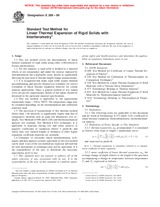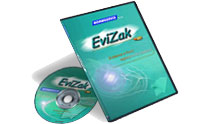Potrebujeme váš súhlas na využitie jednotlivých dát, aby sa vám okrem iného mohli ukazovať informácie týkajúce sa vašich záujmov. Súhlas udelíte kliknutím na tlačidlo „OK“.
ASTM E289-99
Standard Test Method for Linear Thermal Expansion of Rigid Solids with Interferometry
Automaticky preložený názov:
Štandardná skúšobná metóda pre lineárnej tepelnej rozťažnosti tuhých telies s interferometria
NORMA vydaná dňa 10.3.1999
Informácie o norme:
Označenie normy: ASTM E289-99
Poznámka: NEPLATNÁ
Dátum vydania normy: 10.3.1999
Kód tovaru: NS-46206
Počet strán: 9
Približná hmotnosť: 27 g (0.06 libier)
Krajina: Americká technická norma
Kategória: Technické normy ASTM
Anotácia textu normy ASTM E289-99 :
Keywords:
Abbe-Pulfrich interferometer, Comparative Fizeau interferometers, Priest (dental) interferometer, comparative type Fizeau interferometers,emlinear thermal expansion of, rigid solids, annex,, Coefficient of linear thermal expansion, Contraction, Copper, Expansion, Fizeau interferometer, Interferograms/Interferometry, Michelson interferometer, Platinum, Thermal expansion/contraction,emlinear, linear thermal expansion,emrigid solids,using interferometry, test,,Order Form
Doplňujúce informácie
| 1. Scope | ||||||||||||
|
1.1 This test method covers the determination of linear thermal expansion of rigid solids using either a Michelson or Fizeau interferometer. 1.2 For this purpose, a rigid solid is defined as a material which, at test temperature and under the stresses imposed by instrumentation, has a negligible creep or elastic strain rate, or both, insofar as significantly affecting the precision of thermal length change measurements. This includes metals, ceramics, refractories, glasses, rocks and minerals, graphites and fiber, and other reinforced matrix composites. 1.3 It is recognized that many rigid solids require detailed preconditioning and specific thermal test schedules for correct evaluation of linear thermal expansion behavior for certain material applications. Since a general method of test cannot cover all specific requirements, details of this nature should be discussed in the particular material specifications. 1.4 This test method is applicable to the approximate temperature range -150 to 700°C. The temperature range may be extended depending on the instrumentation and calibration materials used. 1.5 The precision of measurement of this absolute method (better than +40 nm/m[dot]K) is significantly higher than that of comparative methods such as push rod dilatometry (for example, Test Methods D696 and E228) and thermomechanical analysis (for example, Test Method E831) techniques. It is more applicable to materials having low and, or negative coefficients, or both, of expansion (below 5 [mu]m/m[dot]K) and where only very limited lengths or thickness of other higher expansion coefficient materials are available. 1.6 Computer of electronic based instrumentation, techniques and data analysis systems equivalent to this test method can be used. Users of the test method are expressly advised that all such instruments or techniques may not be equivalent. It is the responsibility of the user to determine the necessary equivalency prior to use. 1.7 This standard does not purport to address all of the safety concerns, if any, associated with its use. It is the responsibility of the user of this standard to establish appropriate safety and health practices and determine the applicability of regulatory limitations prior to use. |
||||||||||||
| 2. Referenced Documents | ||||||||||||
|
Odporúčame:
EviZak - všetky zákony vrátane ich evidencie na jednom mieste
Poskytovanie aktuálnych informácií o legislatívnych predpisoch vyhlásených v Zbierke zákonov od roku 1945.
Aktualizácia 2x v mesiaci !
Chcete vedieť viac informácii ? Pozrite sa na túto stránku.




 Cookies
Cookies
